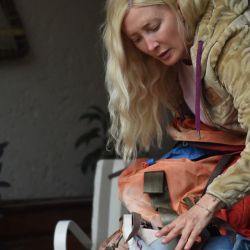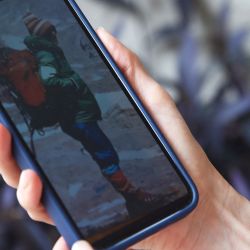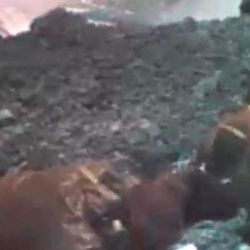Two daughters of an Argentine mountaineer who died on an icy volcanic peak in Andes 40 years ago, have retrieved his backpack from the spot – finding camera film inside that allowed them a glimpse of some of his final experiences.
Guillermo Vieiro was 44 when he died in 1985 while descending Argentina's Tupungato lava dome, one of the highest peaks in the Americas.
Then last year, his backpack was spotted on a slope by mountaineer Gabriela Cavallaro, who examined it and contacted Vieiro's daughters Guadalupe, 40, and Azul, 44.
“We were climbing to around 6,100 metres when we spotted something on the glacier. You could see a backpack, a pickaxe, ropes,” explained Cavallaro.
She and her colleague, fellow mountain guide Oswaldo Freire, took a camera and a pickaxe, but left the backpack behind for safety.
“It was kind of welded to the ice, a little work had to be done to get it off,” said the 36-year-old mountaineer.
In February this year, Cavallaro, along with Guadalupe and Azul, set out with four other guides and two filmmakers on an 11-day journey to recover the bag from an altitude of about 6,100 metres (20,000 feet) – close to the summit of the 6,600-metre volcanic peak.
"In my family, the word 'mountain' was always forbidden. My mother wants nothing to do with the discovery of this backpack. It's a family that has been broken by grief, by the void," said Azul, who was just four years old when her father died.
"It all seemed crazy to me, and I didn't want to go back to the volcano where he had died. But as the months went by... I started to loosen up, and began thinking: 'Why not?'"
Inside the backpack, the women found a jacket, a sleeping bag, a water bottle, aspirin, Vitamin C tablets, a set of knives and two rolls of film that had belonged to their father.
"Spiritually, it felt like a greeting, like: 'I'm still here, I exist. You're not alone'," Azul recounted.
The experience also allowed her to learn more about a man she never got a chance to know.
"My mother never really told us who he was. We knew he had died in the mountains and that he was a mountaineer, but not much more than that. So, it was like rediscovering his story, like saying, wait... we have a father who had a life, a history. So it was like discovering him all over again."
Among other feats, Vieiro conquered Aconcagua, the highest peak in the Americas at 6,900 metres, several times.
Photos taken from other film found inside the same backpack by Cavallaro a year earlier, showed that Vieiro and his partner and apprentice Leonardo Rabal, 20, had been the first climbers to reach the top of Tupungato from its eastern side – the most challenging route.
"That slope has never been scaled again," said Cavallaro, who lives at the foot of Tupungato in the city by the same name.
"What they [Vieiro and Rabal] accomplished has real historical value in Argentine and international mountaineering," she added.
Cavallaro compared Vieiro to Argentina’s most famous sporting hero: “You talk about famous footballers at that time, like Maradona. Well, in mountaineering, it was Guillermo Vieiro.”
The bodies of Vieiro and Rabal were recovered shortly after they died.
Azul and her sister said they would donate their father's belongings in an attempt to share a "piece of Argentine mountaineering history" with others.
– TIMES/AFP


























Comments